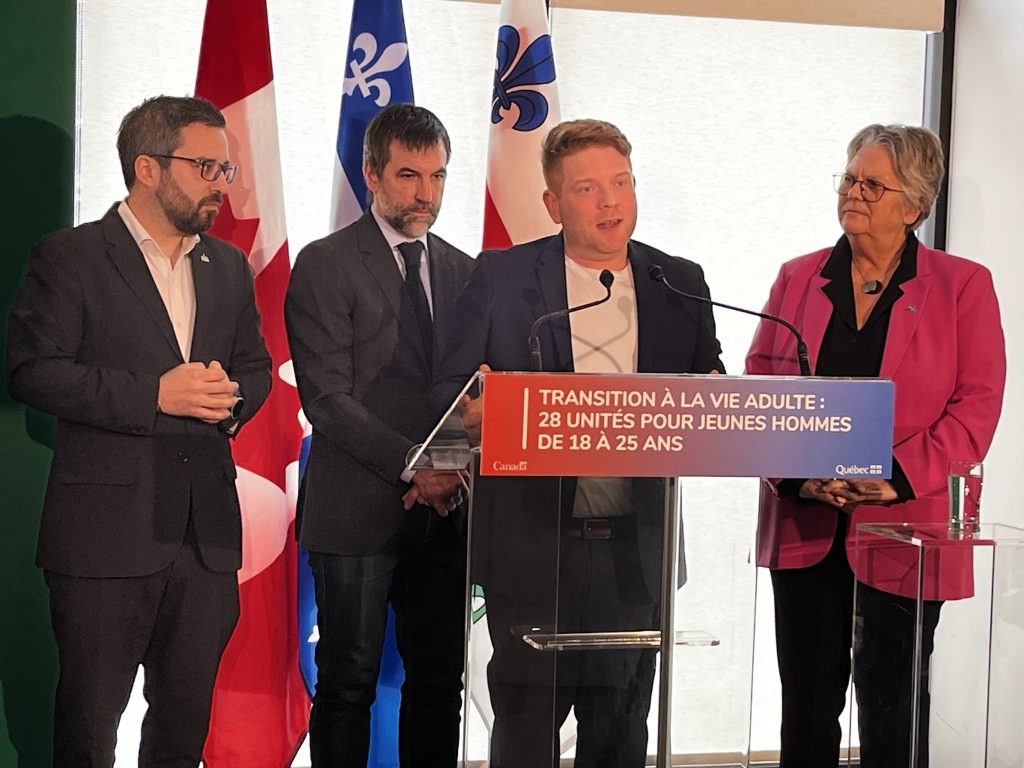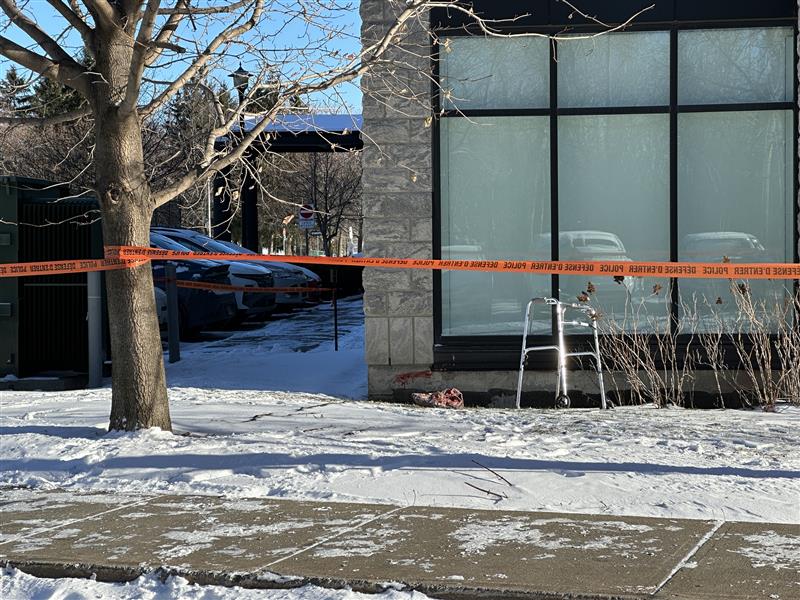Hébergement Jeunesse Le Tournant creates safe space for at-risk young men in Montreal

Posted March 4, 2025 1:53 pm.
Last Updated March 4, 2025 5:06 pm.
The Agir en amont project was inaugurated on Tuesday. It was set up by the organization Hébergement jeunesse Le Tournant, and offers living spaces for young men aged 17 to 25 years old who previously lived at Montreal’s Centres jeunesse.
The project consisted of renovating two three-storey buildings located at 1750 Atateken Street and developing 28 living units, including 24 studios and four bedrooms. The home includes a common kitchen, a dining room, a living room and intervention offices that promote community life.
In attendance at the inauguration were federal Minister of Environment and Climate Change Steven Guilbeault and Montreal’s Executive Committee member responsible for urban planning, OCPM and homelessness Robert Beaudry, as well as Quebec Minister responsible for Social Solidarity and Community Action Chantal Rouleau.
“For us, it’s not the (only) answer, but it’s one of the many answers that we need to response to this crisis,” Beaudry said in a press conference. “It’s really important that we develop this project right now, but it’s more important that we still focus to developing more affordable and social housing for people who are more represented in homeless population right now in Montreal.”
The project, which began back in Dec. 2022, aims to also allow young men to improve and maintain their living conditions, physical and psychological health, support them in their personal and professional development, and create links with the community. The organization hopes the centre evokes change in the young men’s life path and help prevent potential homelessness.
“The Agir en amont project is made to answer the needs of young men who use the services of our youth centers and who are arriving at adulthood. By allowing them to have a stable place to stay, we are taking significant steps to prevent episodes of homelessness over the next few years,” Rouleau said.
Accompanying resident youth will be a team of social workers whose role will be to support young men in their personal and professional development and ensure that they have access to connections within the community, something that Rouleau said will foster a “dynamism” in these residences.
“In addition to having a housing, (youth) will be able to develop links with the community, to break social isolation. This ensures a better stability,” Rouleau said.
Christopher Ouellet is a resident who has lived in Agir en amont’s social housing for young men since July. He said that the help of social workers on site has helped him navigate challenges related to school, as well as assisting him during his transition to living in the new residences.
“Living here has allowed me to continue my studies, to have a roof, and to be in the center of the city,” Ouellet said. “The social workers here, they give me really support (…) if I have questions with school, my choice of courses or my career I can always go to (them).”
Funding for the project
The new units received a total of $12.7 million, of which more than $10.3 million comes from the Government of Canada through the second Rapid Housing Initiative Agreement, a deal that saw collaboration between federal and provincial governments in an effort to build affordable housing in Quebec.
“We, for our approach, wanted to transform the way Canada constructs housing. So we invested a lot in research and development, in new techniques and even new technologies for construction to be able to do this quicker,” Guilbeault said.
The Société d’habitation du Québec (SHQ) has granted an amount of nearly $1.2 million. A one-time funding of $309,000 was provided by the Ministry of Social Services for the salaries of the workers. The City of Montréal provided a contribution of $581,933 from the social component of the by-law to improve the supply of social, affordable and family housing (RMM) in order to complete the financial package for the project.
“When we want to face (homelessness), it takes all three layers of government to pull up their sleeves,” Beaudry said, “and to give the means to community organizations on the ground that who, for years, have worked on solutions.”








